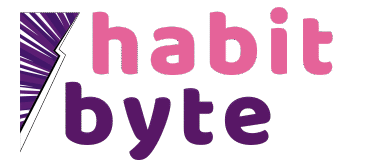Step 4: Work in Focus Cycles
What to do: Use a Pomodoro (25/5) or 50/10 cycle. Say out loud, “Timer on. Focus on slide outline only.” Put your phone in another room or use Do Not Disturb. During breaks, stand, stretch, or hydrate.
Why it matters: Short sprints plus intentional recovery increase sustained attention and reduce mental fatigue, essential for complex or creative work.
- Tip: Choose one task per sprint. If it’s large, break it into sub-tasks.
- Tip: Track completed cycles to visualize progress (✔✔✔).
- Tip: Avoid screens or social media during breaks, use the time to reset your body and mind.
- Example workflow: Sprint 1 – outline report, Sprint 2 – draft intro, Sprint 3 – edit figures, Sprint 4 – finalize conclusion.
Step 5: Review and Adjust Midday
What to do: Around lunchtime, review what you’ve accomplished and update your “Tomorrow’s Focus” if needed. Adjust priorities based on progress and energy.
Why it matters: A mid-day check prevents the afternoon slump and ensures that you stay aligned with your goals, rather than reacting to distractions.
- Tip: Use a quick 5-minute reflection: What went well? What needs adjustment?
- Tip: Reschedule unfinished tasks into tomorrow’s top 1–3 outcomes.
- Tip: Note any recurring interruptions and plan solutions for the next day.
Step 6: Evening Wrap-Up and Reset
What to do: Dedicate 10–15 minutes at the end of your workday to clear your workspace, log accomplishments, and plan for tomorrow. Update your “Tomorrow’s Focus,” lay out materials, and shut down devices to signal the end of work.
Why it matters: Ending the day with a reset reinforces completion, reduces mental clutter, and sets up a smooth start for the next day.
- Tip: Celebrate small wins, check off completed outcomes to reinforce progress.
- Tip: Quick reflection: What worked today? What can be improved?
- Tip: Prep clothes, workspace, or files for tomorrow to reduce morning friction.
Step 7: Weekly Review and Habit Adjustment
What to do: Once a week, review your time blocks, focus cycles, and outcomes. Note which habits increased productivity and which need adjustment. Plan small tweaks for the upcoming week.
Why it matters: Weekly reflection helps you optimize routines, maintain momentum, and continuously improve efficiency without burnout.
- Tip: Track metrics like number of completed deep work blocks or Pomodoro cycles.
- Tip: Identify patterns: When were you most productive? Which distractions recur?
- Tip: Adjust routines gradually rather than making drastic changes.
Conclusion
Building productive habits and routines isn’t about cramming more into your day, it’s about designing a system that aligns with your energy, priorities, and real-life schedule. By prepping the night before, activating your morning, blocking time, working in focus cycles, reviewing midday, wrapping up efficiently, and adjusting weekly, you create a repeatable structure that reduces decision fatigue, protects focus, and maximizes output. Consistency, reflection, and small adjustments compound over time, helping you finish each day feeling accomplished, balanced, and in control of your productivity.
